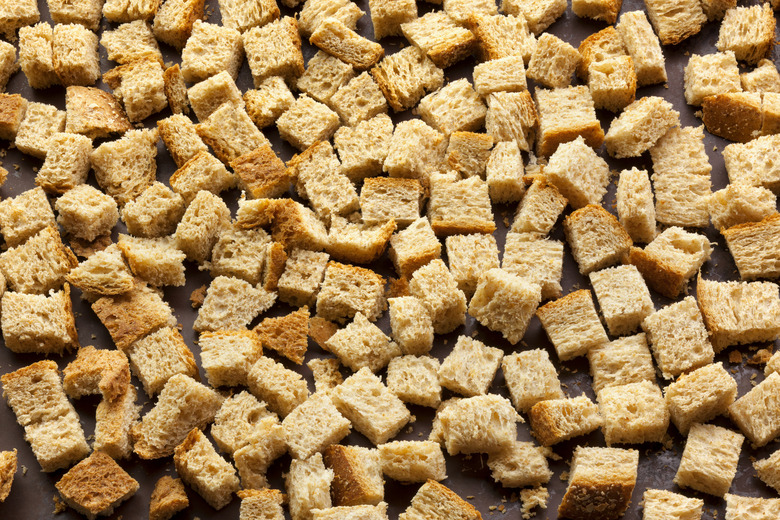The Easiest Way To Dry Bread For Stuffing
Everyone has their favorite side dish for Thanksgiving. For some, it's creamy mashed potatoes seasoned with garlic and a hint of rosemary. For others, it's homemade cranberry sauce sprinkled with cinnamon and candied orange peel. But if there's one side dish that outranks them all, it's stuffing.
The Best Thanksgiving Side Dish Recipes
Made of piles of bread cubes mixed with butter, broth, vegetables and spices, stuffing offers a savory herbaceous flavor that takes any Thanksgiving spread to the next level. While some prefer the equally-as-delicious boxed variety, there's something rewarding about making this favorite dish from scratch.
But the secret to nailing stuffing happens before any real cooking takes place; it all comes down to how you choose and prepare the bread. Sure, the other ingredients matter, but it's the bread that soaks up those flavors and makes the dish what it is.
So, how do you ensure crispy cubes of bread that have a moist flavor-bursting center? There are a few things to consider when making dried bread cubes, and we're here to show you the ropes.
What type of bread should you use for stuffing?
Beyond stuffing, dried bread cubes are used for homemade croutons, bread pudding, panzanella, strata and more. The bread you choose will dictate the amount of flavor in those dishes.
Avoid very moist bread like pumpernickel and whole grain because well-hydrated bread won't soak up the other ingredients during the cooking process. For stuffing, that's butter and broth.
Instead, opt for dry bread. White is preferable because it's fluffy and has tiny holes that allow all your added flavors to your stuffing; that helps them really penetrate the bread. In addition to white, other dry types of bread like challah and brioche work, too. Keep in mind that both of those options are egg-heavy, which will affect the flavor of the stuffing and give it a rich bite.
Dry bread vs. stale bread
Most people will tell you to buy a loaf of bread the day before making stuffing and then leave it out to go stale. While this method is fine, another step is needed to maximize the bread's ability to absorb other flavors; you need to dry it.
Although stale bread will seem dry, it has hidden pockets of water that form when the starch molecules crystallize. This process limits the bread's ability to absorb other things like butter and chicken broth. Drying the bread extracts the excess moisture through evaporation and it's necessary if you want to avoid a soggy plate of stuffing.
How to dry bread
The drying-out process is simple. Start by preheating your oven to 275F. In the meantime, use a serrated knife and slice the bread into cubes. Add the cubed bread to a baking sheet and place in the oven for about 40 minutes, or until dry. Be sure to toss the cubes a few times to ensure it dries evenly.
Once the cubes are dry, try this technique on some of our best stuffing recipes for Thanksgiving.
